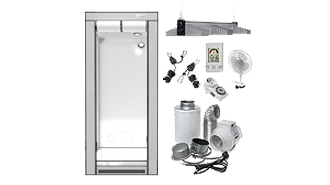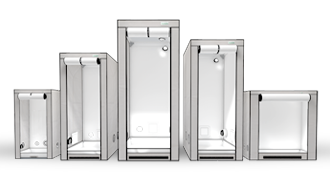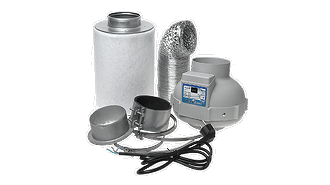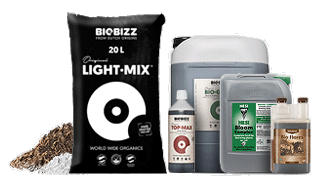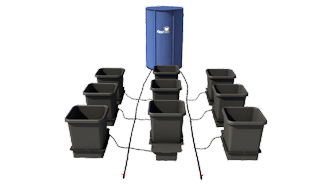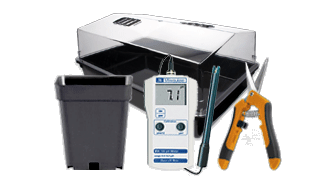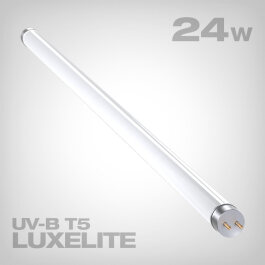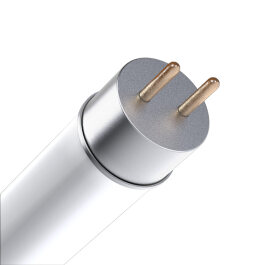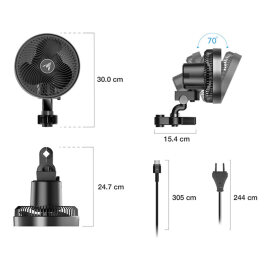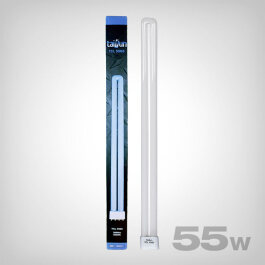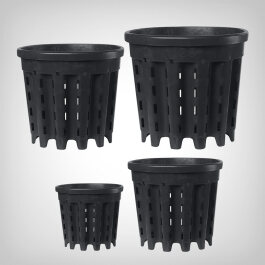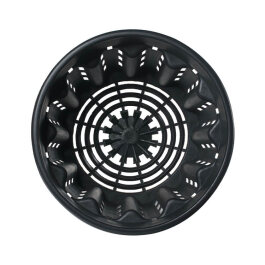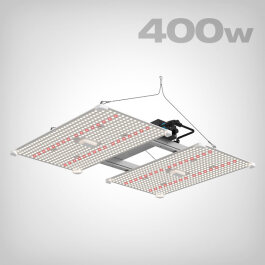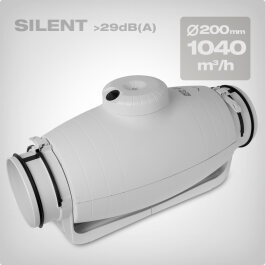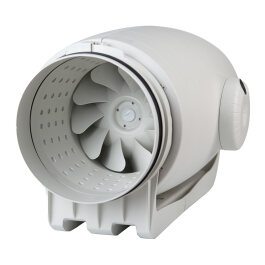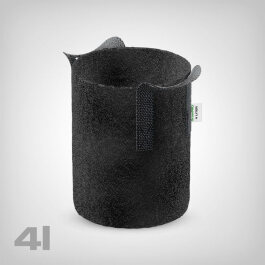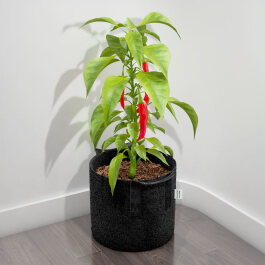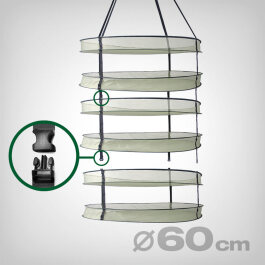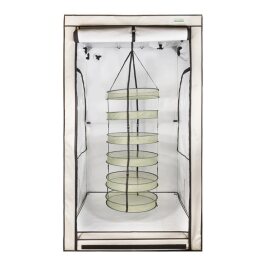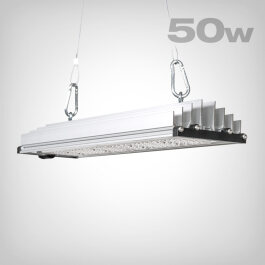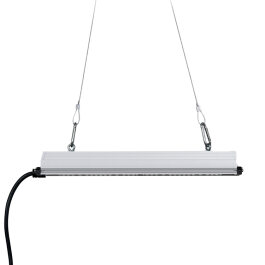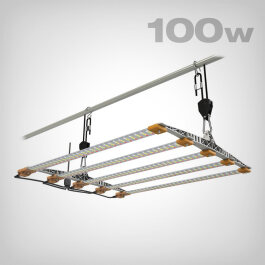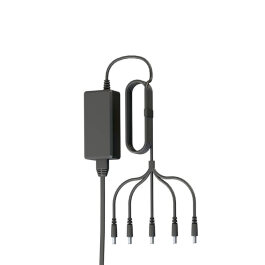Growmart Grow Shop - Europe's No. 1 Online Grow Shop
Growmart Grow Shop - Europe's No. 1 Online Grow Shop
Welcome to Growmart - Growshop, the specialist for hydroponics grow equipment in Europe. Get an overview in our home growing information area, discover our range or take advantage of our perfectly harmonised growing sets, grow tents and a wide selection of grow supplies. No matter whether you just want to pretty-up your window boxes or set up a productive indoor grow zone - in the Growmart hydro store you're guaranteed to find what you need. Proven quality at a reasonable price!
About us
We are a private owned company from Hamburg, Germany and have been running Growmart since 2012. We stock over 1,500 different products for any indoor cultivation needs and ship them all across Europe. Great customer service is our top priority, so by any means, do not hesitate to contact us if there are any questions.
More information on the topic:
The GrowPRO grow tent, electricity costs calculator, Grow shop information area
Your advantages at Growmart
Growmart warehouse sale
Our opening hours
Saturday: Closed
Sunday: Closed
You can find us here
Billbrookdeich 80
22113 Hamburg-Billbrook
How to reach us
Your telephone support around the assortment, your current order or other questions:
Tel.: +49 (0)40 - 73 67 61 91
Monday to Friday, 9 a.m. - 12 a.m. & 1 p.m. - 4.30 p.m.
Or via the contact form

Our opening hours
Saturday: Closed
Sunday: Closed
You can find us here
Billbrookdeich 80
22113 Hamburg-Billbrook
How to reach us
Your telephone support around the assortment, your current order or other questions:
Tel.: +49 (0)40 - 73 67 61 91
Monday to Friday, 9 a.m. - 12 a.m. & 1 p.m. - 4.30 p.m.
Or via the contact form
How to reach us
Your telephone support around the assortment, your current order or other questions:
Tel.: +49 (0)40 - 73 67 61 91
Monday to Friday, 9 a.m. - 12 a.m. & 1 p.m. - 4.30 p.m.
Or via the contact form
Growmart – Grow Shop in Europe for Indoor Grow Equipment
Welcome to Growmart! We provide an online grow shop with a carefully balanced selection of items, affordable prices and neutral, fast shipping.
The satisfaction of our customers always comes first at Growmart. Visit us on site (Mon-Fri: 9 AM – 6:00 PM, give us a call or write us a message. We will respond to your enquiries promptly. In addition to personal customer service, we also offer comprehensive advice regarding our products so that you can be sure of achieving the best results.
Quick and easy shipping
We deliver to Germany and other European countries. We dispatch quickly and neutrally with DHL, the shipper is CRP Import Export GmbH. The delivery note and invoice are enclosed inside the package. Packages up to 30 kg cost 9,98 € for Austria, 14,90 € for Malta and 10 € plus local VAT for all remaining EU-Countries. All orders within Germany from EUR 100 are free of shipping costs (except the charge for cash on delivery orders). However, rates may vary for big and heavy shipments. We ship packages from Monday to Friday. Your order will be shipped on the same day or the following working day.
Means and methods of payment
We accept PayPal, bank transfer, credit cards, Barzahlen.de, cash on delivery, Klarna, DIRECTebanking and more for online orders.
We accept cash and Maestro cards (EC cards) for self-collection from our warehouse (Mon-Fri: 9 AM – 6:00 PM).
Our product range
We stock a carefully balanced range of products from reputable manufacturers with years of experience as well as from manufacturers who have just launched new, innovative products and have already achieved outstanding results. This is especially the case with new LED grow lights and some hydroponic nutrients. We always offer new products with certified quality fresh in our range.
In addition to these innovations for advanced and professional users, we also provide everything that beginners need. Our grow kits in particular ensure an easy start and a cost saving compared to individual prices. The kits are put together in such a way that users can start growing right away using only the best products. Newcomers can easily get started with our grow tents and kits. There are of course also configurations for a grow room ventilation kit and for a fertiliser kit from different manufacturers.
Grow lights
There is no growth for indoor growers without plant lighting. The type, duration and intensity of the light should be perfectly adapted to your grow and setup. Since your personal requirements are important, we stock an extensive range of high-quality lamps.
This includes conventional grow lights such as high-pressure sodium lights, metal halide lights or CFL lights. Many are also available as kits.
LED grow lights are a relatively new trend that is becoming increasingly popular. This is because LED lights generate almost no heat, save energy and can be perfectly adapted to the respective growth phase of your plants in terms of the respective light spectrum used. This leads to faster flowering and higher yields. So LEDs save you time and money.
We stock grow lights such as the high-pressure sodium variant from Lumatek and Sunmaster or the LED lamps from SANlight, Greenception and others.
We also have accessories such as the Adjust-A-Wings reflector, the euro reflector or the air-cooled reflector available in stock to ensure optimum light distribution in your grow room.
Hydroponic nutrients
We have various hydroponic nutrients and fertiliser kits in stock to ensure optimum growth and the best quality of your grow. We sell products from top brands such as Canna, Hesi, BioBizz, Plagron and Atami. We stock these as individual fertilisers as well as fertiliser kits for beginners or for trying them out. We also have different types of fertilisers that are perfectly suited to working with soil, coconut or other hydro systems. Our NPK fertilisers are stored in a special storage area for fertilisers and are re-ordered on a regular basis so that we can always provide you with the best quality and longevity.
Soils and growing media
The right grow soil or the right growing media will lay the foundation for the optimal growth of your plants. This includes soil that is already pre-fertilised and provides your plants with nutrients for several weeks, as well as the Plagron Light Mix, which is scarcely pre-fertilised and allows professionals to have a targeted influence on the plants right from the start and to control the EC and pH values. Different soils consist of a mix of different types of peat, possibly pearlite, tree bark or worm humus. We stock coco growing media from various manufacturers such as BioBizz or Canna for advanced growers.
Grow tent
You can create the optimal grow room for your plants with the right grow tent or a complete grow tent kit. Odours do not penetrate to the outside and the light in the grow tent is optimally used. We stock all popular grow tents in different sizes. Our own GrowPRO 3.0 grow tent is also available in sizes XS to XL as well as a budget version or as premium kits with more accessories. We also have the Homebox available in various sizes and offer grow tents from Secret Jardin and DiamondBox. Our kits are designed to work together in such a way that the size and performance of the components complement each other perfectly. We will be happy to assist you and put together an individual kit if you cannot find something to suit your needs.
Grow room ventilation
The right grow room ventilation ensures that the permanent exchange of air in your grow room or grow tent does not cause the temperature to get too warm and that humidity remains constant. An extraction fan with a carbon filter also ensures that no odours escape. With an extractor fan kit, you receive a carbon filter, extraction fan and further necessary accessories at an affordable price.
Containers and pots
We offer plant pots in a wide range of sizes from 0.69 litres to 30 litres at affordable prices. We also stock the matching plant pot saucers. Likewise, we offer fabric pots for more air permeability. The Air-Pot from 1 litre to 30 litres ensures a dense, fine root network capable of absorbing nutrients better and more evenly, which can lead to better quality and a higher yield. The AutoPot integrates watering itself via a connected tank and requires neither electricity nor additional equipment.
We place great emphasis on customer service.
Do you still have any questions? We would be happy to help you by email or telephone. We will also be happy to offer you personal advice on site in our warehouse. We are at your disposal Monday to Friday from 9 AM to 6:00 PM.
